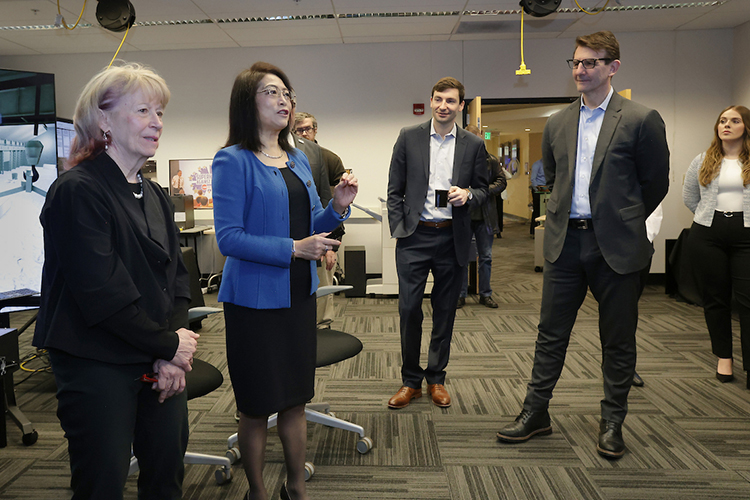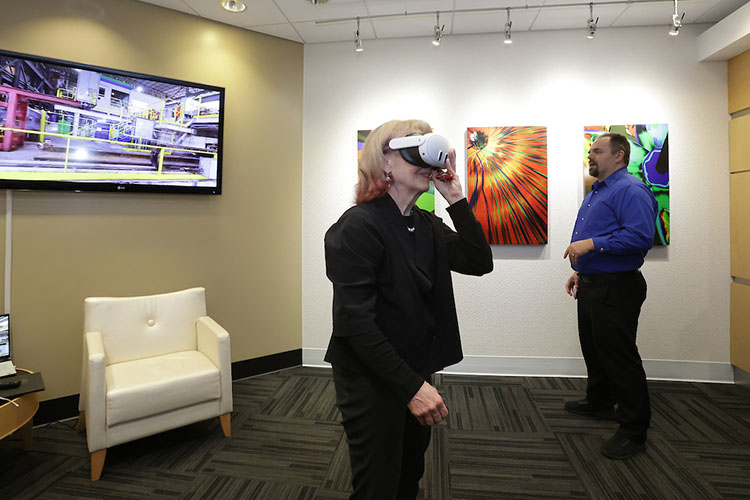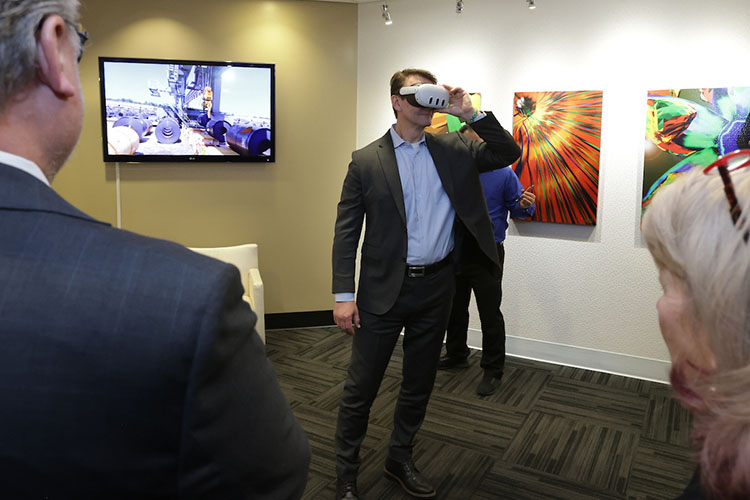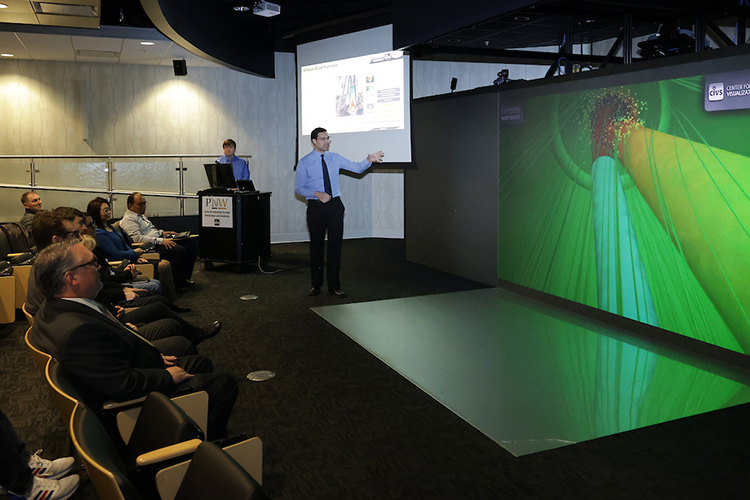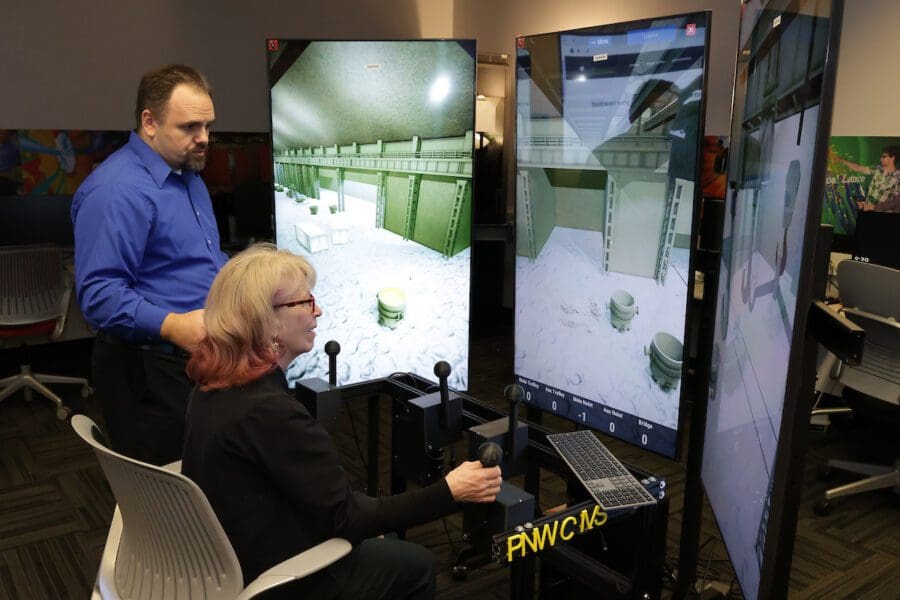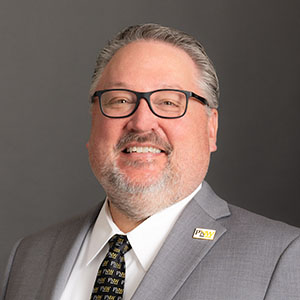Federal officials tout recent multimillion dollar research grants for CIVS during tour
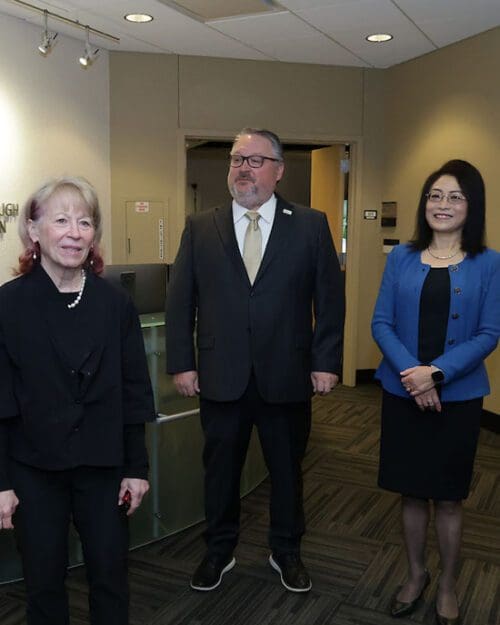
Geri Richmond, far left, U.S. Department of Energy Under Secretary for Science and Innovation, speaks during a visit to PNW's CIVS auditorium and visualization lab. Also pictured include, from left, PNW Chancellor Chris Holford; Chenn Zhou, NIPSCO Distinguished Professor of Engineering Simulation and founding director of CIVS; and U.S. Representative Frank Mrvan.
Commendatory remarks, smiles, and even a few enthusiastic “high-fives” were shared on Feb. 16 as representatives from the U.S. Department of Energy (DOE) and the office of U.S. Representative Frank Mrvan visited Purdue University Northwest’s (PNW) Center for Innovation through Visualization and Simulation (CIVS) to observe research and impacts for federally-funded steel decarbonization initiatives.
In celebration of several recent multimillion dollar research grants from the DOE’s Office of Renewable Energy and Efficiency for CIVS, Geri Richmond, DOE Under Secretary for Science and Innovation, and Rep. Mrvan toured the CIVS space and listened to brief presentations emphasizing the far-reaching impacts CIVS projects serve for industrial innovation, decarbonization, digital transformation, workforce development and community and industry relations.
“I have read about the things CIVS and this institution are doing, and now I am even more impressed,” said Richmond. “My story to take home to the Department of Energy is that it should be proud, and I am very proud to see what you are doing. It is so cool how my brain can go right in the middle of a blast furnace when you are simulating hydrogen and to see what the energy flow would look like.
“If you do not do things like CIVS does to simulate what happens under different conditions, you have to go to the lab and try over and over again. What CIVS has developed is a simulation system, artificial intelligence and machine learning to simulate what can happen, as well as go back and validate the research. I have done a lot of simulations in my own research, but nothing to this level.” Richmond also commented on how CIVS is collaborating with steel industry partners in prototyping and leading in reducing energy use and greenhouse emissions.
What CIVS has developed is a simulation system, artificial intelligence and machine learning to simulate what can happen, as well as go back and validate the research. I have done a lot of simulations in my own research, but nothing to this level.
“When we talk about decarbonization, we talk about the ability of our steel industry to thrive, we talk about renewable and cleaner energy, and we talk about the Purdue Northwest students and CIVS lab being an example for the world to see,” said Mrvan. “When we bring resources back to Northwest Indiana and Purdue Northwest, they are well-spent. We have the industry, workforce and education to bring everyone together in order to make a greater product and show the world we can do it.”
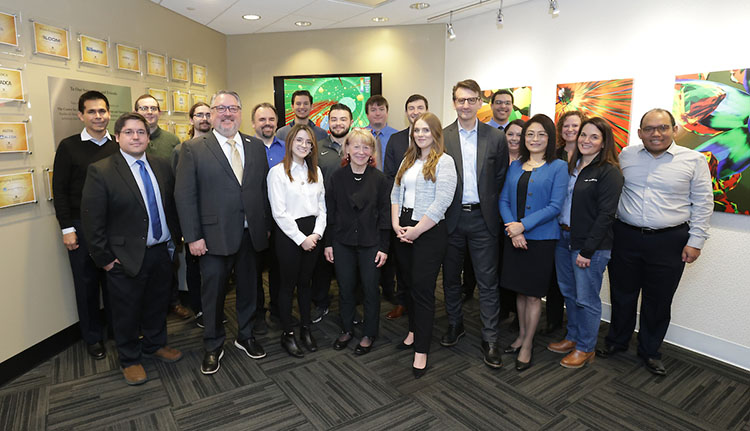
CIVS researchers, Purdue Northwest leadership, and federal officials pose for a photo together on Feb. 16. Geri Richmond, U.S. Department of Energy Under Secretary for Science and Innovation and U.S. Rep. Frank Mrvan visited the center following the announcement of a $7.1 million grant for steel decarbonization research.
During the tour, CIVS research staff and students demonstrated simulations and visualizations of blast furnace processes and other iron and steelmaking processes. In addition, they showcased other projects concerning workforce development, including wind energy education simulators, safety training simulators and virtual steel plant tours. Through 3D goggle apparatuses, Richmond and Mrvan were visually transported into multilayered simulations of industrial spaces.
Besides CIVS’s steel decarbonization research, Richmond and Mrvan also touted the research center’s role in national goals for the development of hydrogen-powered alternative energy solutions. Purdue Northwest, led by CIVS, has actively participated in the Midwest Alliance for Clean Hydrogen, or MachH2. The alliance received $1 billion in federal funding from DOE in 2023 to develop a hydrogen hub focused on accelerating the domestic market for low-cost, clean hydrogen.
When we talk about decarbonization, we talk about the ability of our steel industry to thrive, we talk about renewable and cleaner energy, and we talk about the Purdue Northwest students and CIVS lab being an example for the world to see.
“What Purdue Northwest is doing is an important contributor to why the MachH2 Hydrogen Hub was chosen,” said Richmond. “We want to make sure that you have workforce development, novel ideas and new ways of looking at things. CIVS fits that perfectly while also coupling with industry. Institutions like this are the kind we want to make sure are integrated into the hub.”
“As an institution, one of the things that makes us so successful is how we are integrated into the industry around us,” said PNW Chancellor Chris Holford. “This is evidenced by CIVS and the Steel Manufacturing Simulation and Visualization Consortium (SMSVC) that was established by CIVS. This close collaboration addresses issues that are important to those industries and helps facilitate economic and workforce development. Our goal is not only to be training today’s workforce, but the future workforce 10 years out. As we transition to hydrogen combustion at an industrial scale, you will also see the innovation and commercialization at a smaller scale. Industrial decarbonization and hydrogen consumption will fuel technological advancement that translates into other industries around us, and a lot of that work will be going on right around us in Northwest Indiana.”
“CIVS is proud to collaborate on groundbreaking initiatives that research, test and develop energy solutions in order to improve the quality of life for communities both here and around the country,” said Chenn Zhou, NIPSCO Distinguished Professor of Engineering Simulation and founding director of CIVS and SMSVC. “At CIVS we use cutting-edge technologies to solve real-world problems that can be implemented at large scales. We are grateful for the continued support of DOE, our industry partners, especially our SMSVC member companies, our academic and national lab collaborators, and local communities on these important initiatives.”
In the last three years, CIVS has been the leading organization for three large grants, with a total of $24 million dollars funded by the DOE. These include a recent $7.1 million grant that will specifically support research on steel decarbonization of a steelmaking electric arc furnace through alternative injectants and electromagnetic stirring technology; a $10 million grant for development and demonstration of an industrial hydrogen-fired steel reheating furnace in October 2023; 3) and a $7 million DOE grant for integrated virtual blast furnace for real-time energy efficiency improvement in 2021.
Our goal is not only to be training today’s workforce, but the future workforce 10 years out. As we transition to hydrogen combustion at an industrial scale, you will also see the innovation and commercialization at a smaller scale.
CIVS has also played an important role in three other recent large DOE grants: a $19 million grant for the Center for Steel Electrification by Electrosynthesis (C-STEEL), led by Argonne National Laboratory; a $3 million grant for scaling hydrogen-direct reduced iron pathways to decarbonize iron and steelmaking, led by Carnegie Mellon University; and a nearly $1 billion Midwest Hydrogen Hub (MachH2). All these grants support steel decarbonization and hydrogen clean energy research.
